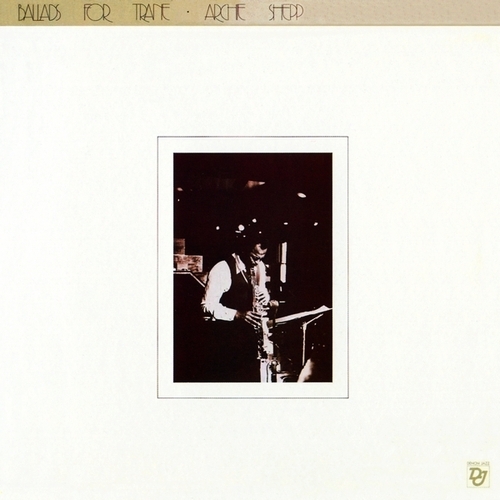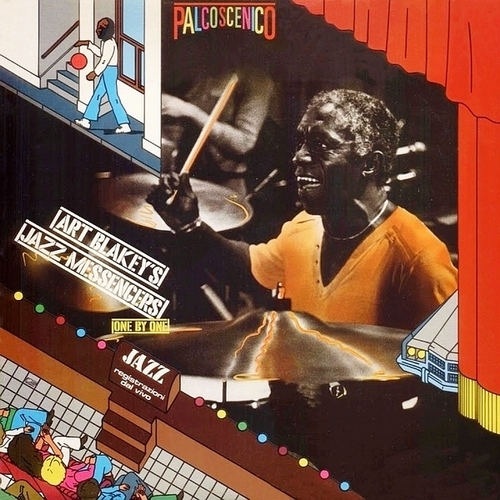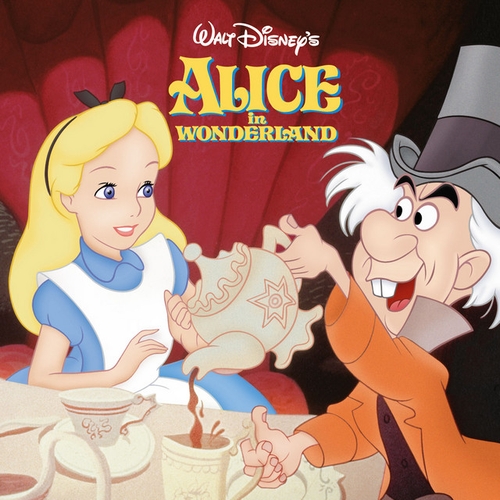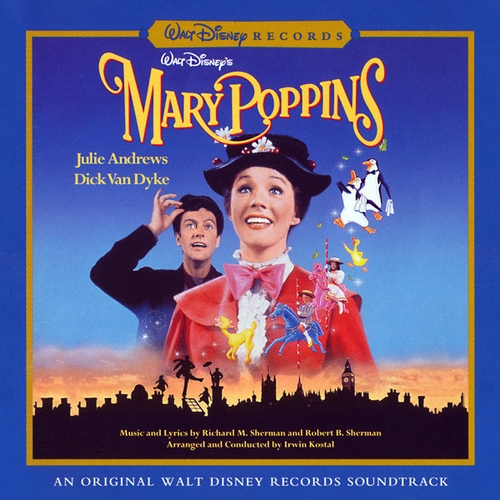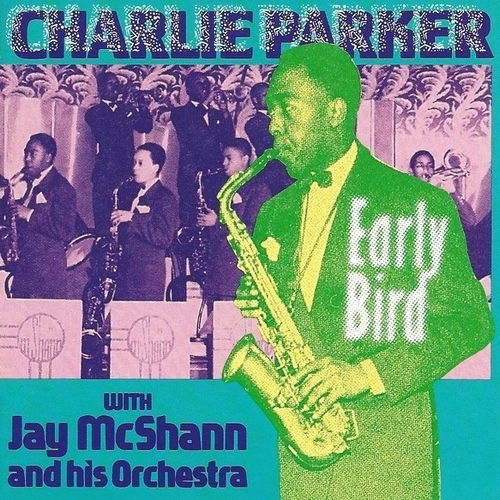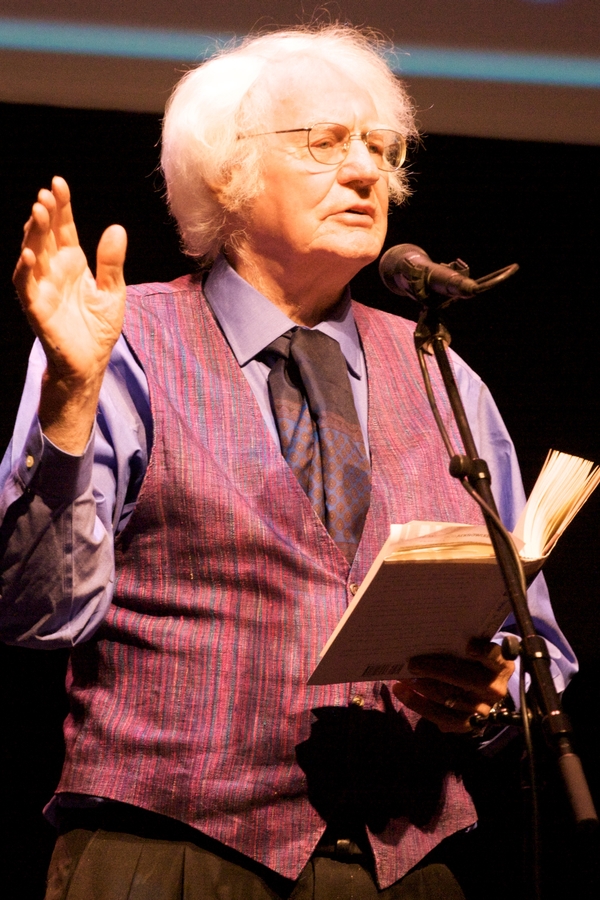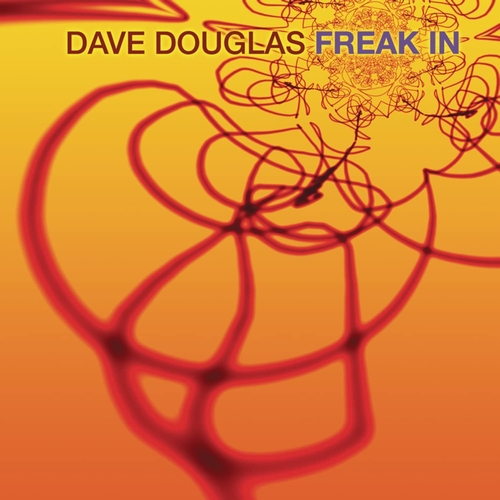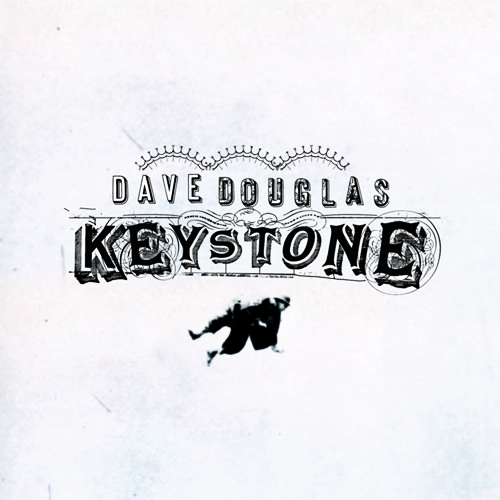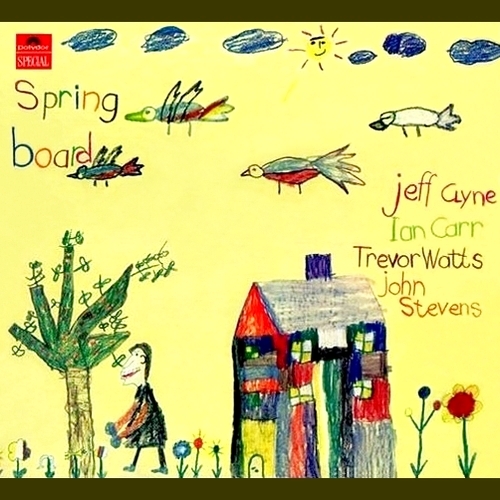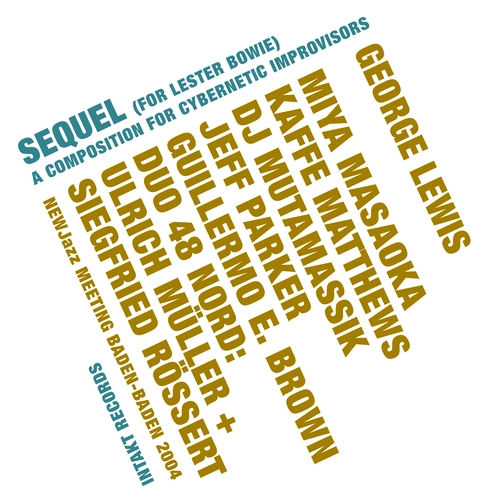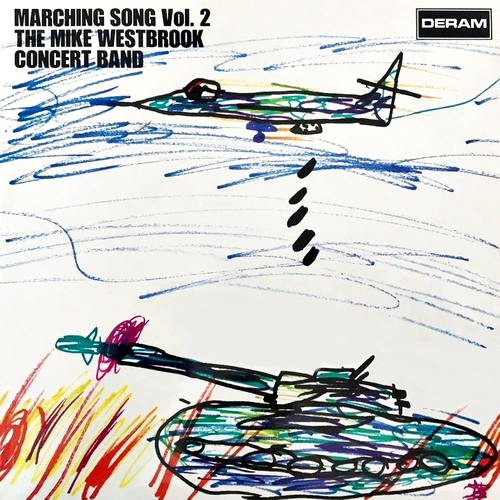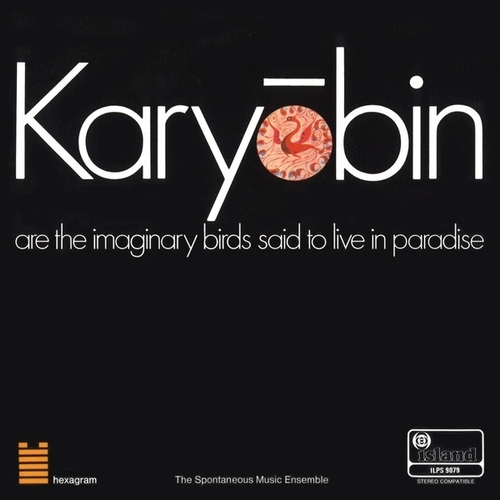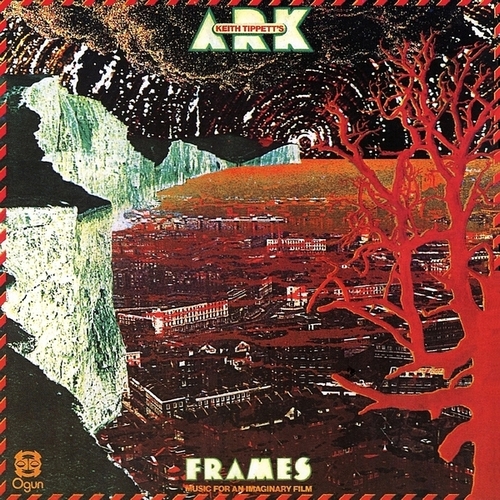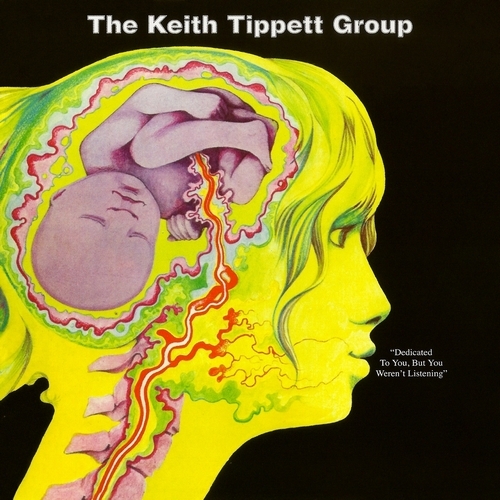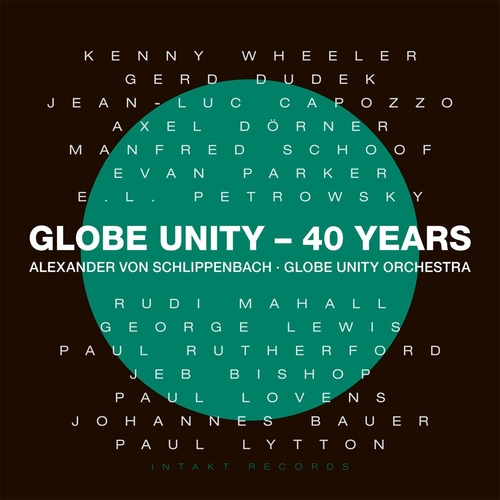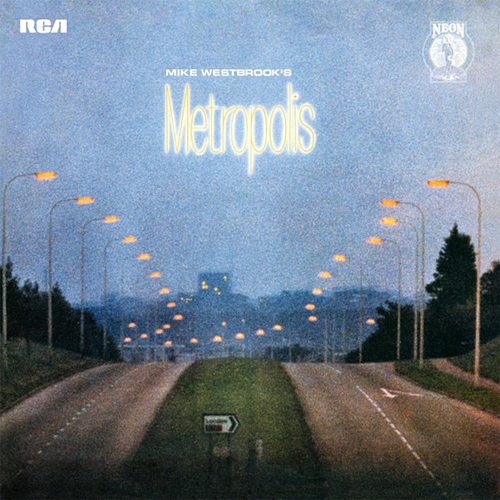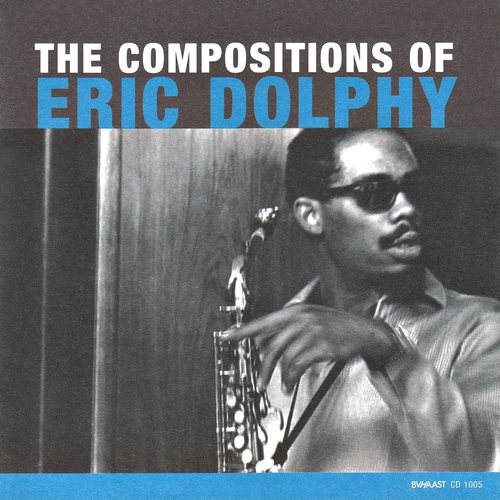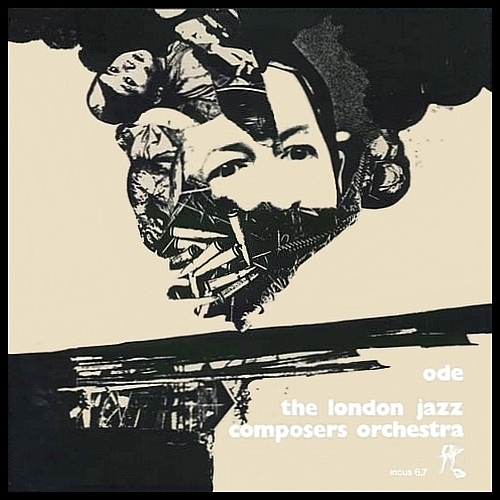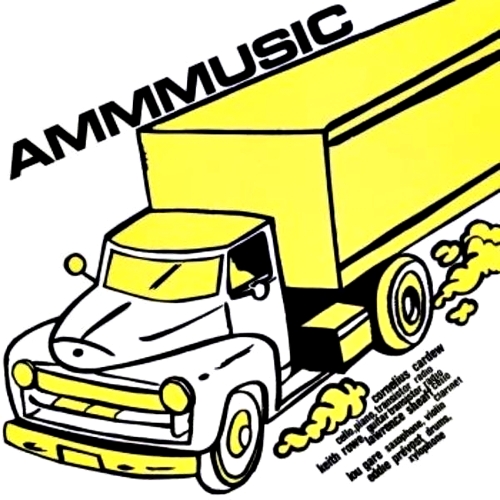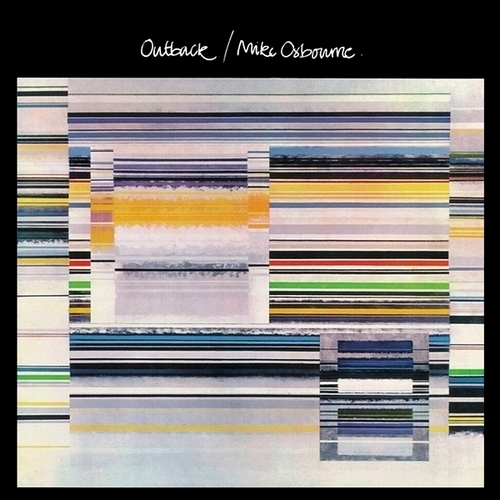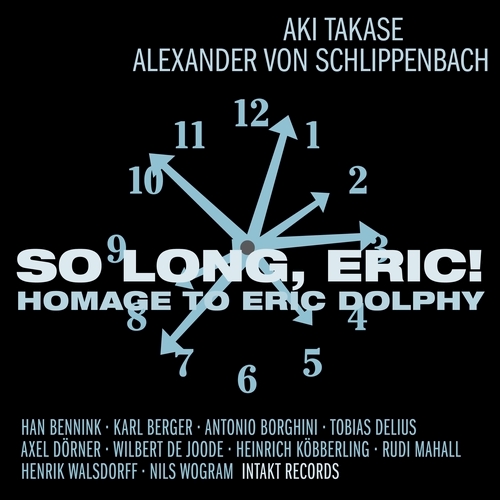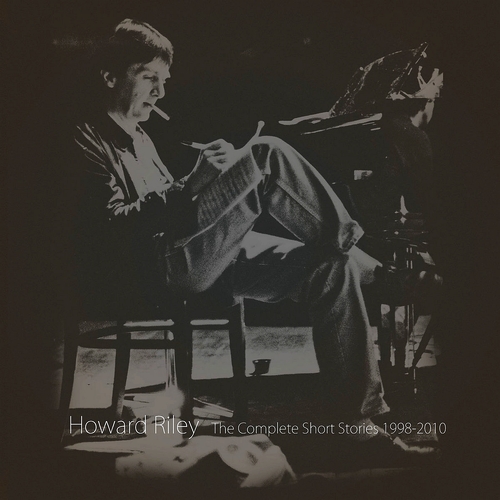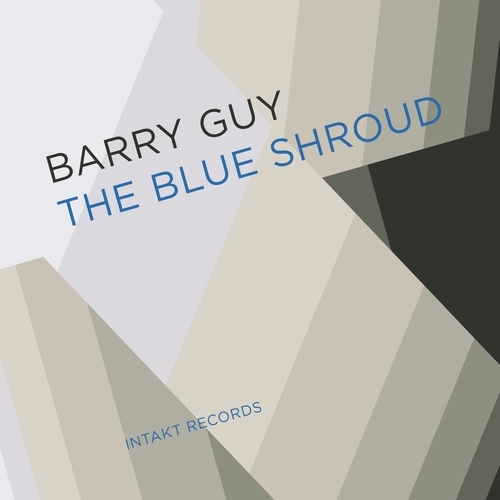Rhythm Changes Playlists 2
+ Film Clips
In addition to the Rhythm Changes Playlists on Spotify, which contain 80 percent of the music addressed in the book, this page offers links, primarily on YouTube and Bandcamp, for over 100 musical examples from the book which are not available for streaming on Spotify.
The page also includes clips from over thirty films mentioned in the text.
Click on the film posters/stills to view the videos; note that film clip links are also included in the listings. Click on any of the album cover images on this page to see larger versions.
You can jump to individual chapters by clicking on the buttons below.
Chapter 1 – The Challenge of the Past:
Jazz, Parody, and Jazz Discourse
VIDEO: It Ain’t Necessarily So – Damon Evans (LPO/Simon Rattle)
Porgy and Bess (Trevor Nunn, 1993) (YouTube)
Gershwin’s major musical theatre piece, Porgy and Bess (1935), has been the subject of both virulent critique and effusive praise. American composer Virgil Thomson, in barely-disguised anti-Semitic mode, critiqued Gershwin’s “gefiltefish orchestration”, while an uncommonly outspoken Duke Ellington bemoaned Gershwin’s “lamp-black Negroisms.” Somewhat more sympathetic commentators, such as the conductor Maurice Peress, viewed “African American-inspired pieces by Jewish composers and librettists as private metaphors of their own suppressed mix of angst and cultural pride.” The debate has been a persistent one, with assessments of the piece ranging from “Tin Pan Alley musical” to bona fide opera.
VIDEO: Somewhere – Jimmy Bryant (dubbing Richard Beymer)/Marni Nixon
(dubbing Natalie Wood) – West Side Story (Robert Wise, 1961) (YouTube)
West Side Story remains one of the most celebrated of musicals, receiving its Broadway premiere in 1957, and given a faithful Hollywood adaptation in 1961. A New York-based retelling of Shakespeare’s Romeo and Juliet, the show was one of the first to tackle contemporary issues of immigration and racial prejudice so directly, and the piece ends with – Spoiler Alert – Tony (the Polish American Romeo) dying from a gunshot wound in the arms of Maria (the Puerto Rican American Juliet). The version of ‘Somewhere‘ recorded in 1962 by the Archie Shepp/Bill Dixon quartet has been the source of much interpretive confusion, although Dixon notes that the song “was used simply because all of the members of the group enjoyed playing it.”
Fable of (George Dubya) Faubus – Normand Guilbeault (2004) Mingus Erectus, Ambiances Magnétiques Jazz (Bandcamp)
Gershwin Medley – Art Blakey and the Jazz Messengers (1956) Stars of Jazz (TV Show) (Soundcloud; go to 6:15)
Modern Fuckin’ Jazz – Us3 (2001) An Ordinary Day in an Unusual Place, Universal Jazz (YouTube)
The Man I Love – Art Blakey (2008) Art Blakey and the Giants of Jazz: Live at the 1972 Monterey Jazz Festival, Monterey Jazz Festival Records (YouTube)
Gershwin Medley – Art Blakey and the Jazz Messengers (1981) One by One, Palcoscenico (YouTube)
Ballad Medley – Art Blakey and the Jazz Messengers (1979) Reflections in Blue, Timeless (YouTube)
Lift Every Voice and Sing (incomplete) – Art Blakey and the Jazz Messengers (1977) In My Prime Vol. 2, Timeless (YouTube)
Gypsy Folk Tales – Art Blakey and the Jazz Messengers (1977) Gypsy Folk Tales, Roulette (YouTube)
Lift Every Voice and Sing – Ray Charles (1972) A Message from the People, ABC (YouTube)
Finale – Jimmy Bryant (dubbing Richard Beymer)/Natalie Wood – West Side Story (1961) (Film clip on YouTube)
Wise One – Archie Shepp (1977) Ballads for Trane, Denon Jazz (YouTube)
Carnival – John Surman (1969) John Surman, Deram (YouTube)
Hello Dolly – Lester Bowie (1974) Fast Last, Muse (YouTube)
VIDEO: White Christmas – Bing Crosby/Marjorie Reynolds
Holiday Inn (Mark Sandrich, 1942) (YouTube)
Following its premiere in Holiday Inn, Crosby’s recording of ‘White Christmas‘ went on to be an Academy Award winner and one of the best-selling singles of all time. The song spent three weeks at the Number One spot in Billboard magazine’s Harlem Hit Parade (the precursor to the current Hot R&B/Hip-Hop Songs charts), which, beginning in October 1942, was derived from sales at several record and music stores in Harlem. Clearly, the dividing line between African American and white audiences – and between African American and white (and often Jewish) musicians and songwriters – was not as significant or as definitive as some contemporary scholars would have us believe. Such arguments have more to do with ideological dogma than historical accuracy.
VIDEO: Long–Haired Hare – Bugs Bunny
(Chuck Jones, 1949; Warner Bros.) (Vimeo)
A typically amusing, if especially merciless, Bugs Bunny vehicle, offering an animated example of a common discursive trope identified by Jane Feuer in the Hollywood musical, in which the “battle between popular and elite art” always results in “the triumphant victory of the popular style.” Bugs makes a memorable appearance as the imperious Leopold Stokowski, the long-haired star of Disney’s reverential Fantasia a decade earlier, trashing the Hollywood Bowl around the opera singer Giovanni Jones and declaring mission accomplished with his down-home signifying banjo. The trope is also plainly evident in the plot of Gold Diggers of 1933, with the protagonist declaring of classical music: “You have to be half-dead to compose that.”
Someday My Prince Will Come – Adriana Caselotti – Snow White and the Seven Dwarfs (1937) (Film clip on YouTube)
Alice in Wonderland – Main Title – Alice in Wonderland (1951) (Film clip on YouTube)
The Boy Next Door – Judy Garland – Meet Me in St. Louis (1944) (Film clip on YouTube)
The Inch Worm – Danny Kaye – Hans Christian Andersen (1952) (Film clip on YouTube)
Afro-Blue – John Coltrane (1991) Live in Japan, Impulse! (YouTube)
Chim Chim Cher-ee – Julie Andrews/Dick Van Dyke – Mary Poppins (1964) (Film clip on YouTube)
My Favorite Things – John Coltrane (1991) Live in Japan, Impulse! (YouTube)
I’m Forever Blowing Bubbles – Charlie Parker/Jay McShann (1991) Early Bird, Stash (YouTube)
What’s Opera, Doc? (1957) (Chuck Jones; Warner Bros.) (Vimeo)
Carioca – Etta Moten – Flying Down to Rio (1933) (Film clip on YouTube)
The Sound of Music / South Pacific (Rodgers & Hammerstein)
VIDEO: My Favorite Things – Julie Andrews
The Sound of Music (Robert Wise, 1965) (YouTube)
An iconic performance by Julie Andrews, in the film version of the popular Broadway show that went on to be a box office record-breaker and cultural phenomenon. Noting its “undeniable qualities,” the song was a favourite of John Coltrane‘s – he first recorded it in October 1960, a year after the Broadway premiere starring Mary Martin, and it became a staple in his repertoire. Chapter 2 challenges Ingrid Monson’s claim that Coltrane’s motivation for recording the song was ironic, and refutes Monson’s contentious statement that “jazz listeners generally view the transformations of Broadway tunes as considerably ‘superior’ to the original materials.”
VIDEO: You’ve Got To Be Carefully Taught – Bill Lee (dubbing John Kerr)
South Pacific (Joshua Logan, 1958) (YouTube)
During early out-of-town tryouts for the stage version of South Pacific in 1949, Rodgers and Hammerstein resisted pressure to remove the bitterly anti-racist song, ‘You’ve Got To Be Carefully Taught,’ following complaints regarding its explicit social commentary, saying that they would rather see the show fail than remove the song. Ingrid Monson’s careless critique of the “white things” in Hammerstein’s lyrics for ‘My Favorite Things’ simply fails to recognize that the lyricist was a significant and active player in the social and political precursors of the civil rights movement, including his involvement in both the Anti-Nazi League and the NAACP.
Gold Diggers of 1933 (Mervyn LeRoy / Busby Berkeley)
VIDEO: The Gold Diggers’ Song (We’re in the Money) – Ginger Rogers
Gold Diggers of 1933 (Mervyn LeRoy, 1933) (YouTube)
One of the most profoundly ironic, and most commonly misunderstood, songs in the history of the Hollywood musical. Debt collecting deputies from the Sherriff’s office interrupt a lavishly-staged dress rehearsal in this Depression-era fable in which the chorus line characters, although they are literally “in the money” in terms of their pre-code costumes, are clearly not “in the money” in the context of the film’s plot, as the deputies stop the show and seize their prop dollars: “You can at least leave me car fare!”, complains Ginger.
VIDEO: Remember My Forgotten Man – Joan Blondell/Etta Moten
Gold Diggers of 1933 (Mervyn LeRoy, 1933) (Vimeo)
A remarkable, and still powerful, Busby Berkeley sequence, illustrating the ‘social conscience’ of Warner Bros. movies of the period, and offering a striking critique of the inequities of the Depression, from the debilitating impact of the First World War to the realities of breadlines, poverty, and homelessness. Notably, albeit briefly, the piece features the vocal talents of the African American contralto and actress Etta Moten, at a time when black performers in Hollywood were most often relegated to roles as maids and porters.
VIDEO: I’m an Old Cowhand – Bing Crosby, et al.
Rhythm on the Range (Norman Taurog, 1936) (YouTube)
The debut performance of songsmith Johnny Mercer’s delightful cowboy parody song, ‘I’m an Old Cowhand,’ written after a car trip across Texas. Variety summed up the movie succinctly: “Despite the title, the costumes and the characters, this is no western. There’s very little range, but plenty of rhythm, and the latter makes it pleasant entertainment.” In light of the song’s faux country origins, Sonny Rollins’s famous version on his 1957 album, Way Out West, can hardly be held to represent, as some commentators have suggested, any convincing fusion of jazz and country music.
VIDEO: You Are My Sunshine – Tex Ritter
Take Me Back To Oklahoma (Al Herman, 1940) (YouTube)
Credited to Jimmie Davis and Charles Mitchell, ‘You Are My Sunshine’ was published in 1940, and quickly became a favourite among singing cowboys, with Ritter’s rendition being one of the song’s first of several appearances on film. Notwithstanding the rather dark tone of the lyrics, the song was enormously popular and has been subjected to a bewildering range of different readings over the years. The central focus of Chapter 3 is on George Russell’s complex, multi-faceted arrangement of ‘You Are My Sunshine,’ which stands as an extraordinary – indeed, still unique – entry in the jazz canon.
I Was Young When I Left Home – Jenny Scheinman (2008) Jenny Scheinman, Koch (YouTube)
The Wild, Wild West – Virginia O’Brien – The Harvey Girls (1946) (Film clip on YouTube)
Wagon Wheels – Everett Marshall (1934) The Nineteen Thirty-Four Edition of Ziegfeld Follies: A Live, In-Performance Recording, AEI (YouTube; go to 58:06)
Wagon Wheels – Wagon Wheels (1934) (Full movie on YouTube)
Wagon Wheels – Paul Whiteman (1934) Wagon Wheels/If I Love Again (78 rpm), Victor (YouTube)
I’m an Old Cowhand – Kenny Dorham (1960) The Arrival of Kenny Dorham, Jaro International (YouTube)
I’m an Old Cowhand – Terumasa Hino (1971) Vibrations, Enja (YouTube)
It’s Dynamite – Ann Miller/Red Norvo Trio – Texas Carnival (1951) (Film clip on TCM)
On the Trail – Richard Davis (1980) Way Out West, Muse (YouTube)
The Last Cowboy – Tin Hat Trio (2002) The Rodeo Eroded, Rykodisc (YouTube)
Willow Weep for Me – Tin Hat Trio with Willie Nelson (2002) The Rodeo Eroded, Rykodisc (YouTube)
You Are My Sunshine – Rice Brothers’ Gang (1939) You Are My Sunshine/Lovelight in the Starlight (78 rpm), Decca (YouTube)
You Are My Sunshine – George Russell (1965) George Russell Sextet at Beethoven Hall II – Guest Don Cherry, SABA (YouTube)
Old Fashioned Love/You Are My Sunshine – Lisa Ono (2006) Jambalaya – Bossa Americana, Virgin (YouTube)
You Are My Sunshine – Patricia Barber (1999) Companion, MFSL (YouTube)
You Are My Sunshine – Count Basie/Alan Copeland Singers (1966) Basie Swingin’ Voices Singin’, ABC-Paramount (YouTube)
You Are My Sunshine – Jimmy McGriff (1968) I’ve Got a New Woman, Solid State Records (YouTube)
You Are My Sunshine – Yuji Ohno (2012) Boss Piano, Vap (YouTube)
VIDEO: Keith Jarrett: The Art of Improvisation (excerpt)
(Mike Dibb, 2005) (Dailymotion)
Jarrett, on playing electric keyboards with Miles Davis: “There was the open window; well, what are we going to look at? Not a pushing of the envelope on purpose. Just… it was a very fun band. That’s about all you can do with electronic instruments: you can have fun. The reason is, they’re toys. So, I had a lot of fun, and he had a chance to actually play his own instrument, but I didn’t.”
Mike Dibb (Narrator): “Having gone electric with Miles Davis, Keith returned with relief to the acoustic piano.”
VIDEO: Keith Jarrett: The Art of Improvisation (excerpt)
(Mike Dibb, 2005) (Dailymotion)
Mike Dibb (Narrator): “After the pressures of the classical world, Keith retreated to his studio to make his own multi-instrumental music.”
Jarrett, on recording his album Spirits (1986) in his home studio in New Jersey: “The land the studio sits in is Native American land, so I just kind of picked up a flute and started to play or picked up a drum and started playing and it eventually started to sound like it belonged where I live. And it was the first time I felt like I was actually making music from my house.”
Iron John: A Book About Men
Robert Bly
The American poet Robert Bly is perhaps best known for his book Iron John: A Book About Men (1990), which spent over a year on the New York Times Best Seller List and became a central text in the development of the controversial ‘mythopoetic men’s movement.’ The inclusion of a poem by Bly as part of the package for Jarrett’s Vienna Concert (1992) opens up the possibility of an interpretation of the pianist’s artistic approach that has seldom been discussed in the literature: namely, a masculinist reading, situating Jarrett’s aesthetic practice within the conceptual framework provided by Bly’s problematic theories of contemporary manhood. One of the most obvious points of connection between Bly’s philosophy and Jarrett’s performance practices is to be found in the latter’s Spirits (1986), a project in which the primitivist rhetoric of both Jarrett and his biographer Ian Carr fits the hairy hand of Bly’s ‘Wild Man’ like the proverbial glove.
VIDEO: I Sing the Body Electric (full episode)
(The Twilight Zone, 1962) (Dailymotion)
The American sci-fi writer Ray Bradbury’s I Sing the Body Electric first appeared as a 1962 teleplay for the classic television series The Twilight Zone, and a revised version was later published in a collection of short stories in 1969. In Chapter 5, employing the 1972 Weather Report recording, I Sing the Body Electric, as a starting point, I trace a contextualist path that leads through the work of Bradbury and that of the American poet Walt Whitman to nineteenth-century theories of electricity, returning to the technological humanism in Bradbury’s work as a metaphor for Weather Report’s creative practice.
VIDEO: Fatty and Mabel Adrift (Roscoe ‘Fatty’ Arbuckle, 1916)
(Soundtrack by Dave Douglas and Keystone) (YouTube)
The band Keystone combines acoustic and electric instruments and occupies a particular position among trumpeter and composer Dave Douglas’s various musical projects, having been formed with the intention of accompanying silent films, as on the band’s self-titled debut, which provides music for Fatty and Mabel Adrift, a 1916 short film by the unfairly maligned silent movie star Roscoe ‘Fatty’ Arbuckle. Noting the innovative nature of Arbuckle’s early filmmaking, in his liner notes Douglas observes: “There is a levity and a fast pace to his work that made me feel it would work with modern music.”
Freak In – Dave Douglas (2003) Freak In, Bluebird (YouTube)
“It’s alive! It’s alive!” – Frankenstein (1931) (Film clip on YouTube)
The Creature and Maria – Frankenstein (1931) (Film clip on YouTube)
The Creature meets his Bride – The Bride of Frankenstein (1935) (Film clip on YouTube)
Igor and Frankenstein – Young Frankenstein (1974) (Film clip on YouTube)
Moonshine – (Roscoe ‘Fatty’ Arbuckle, 1918) (Soundtrack by Dave Douglas and Keystone) (Full movie on YouTube)
Derek Bailey (1971) Solo Guitar Volume 1, Incus (YouTube); see also Honest Jon’s Records
Along the Coast – John Stevens/Derek Bailey/Kent Carter (1994) One Time, Incus (YouTube)
Spark of Being (Bill Morrison / Dave Douglas)
VIDEO: Spark of Being – Trailer
Spark of Being (Bill Morrison, 2010) (YouTube)
A visually and musically stunning collaboration between American filmmaker Bill Morrison and trumpeter and composer Dave Douglas, which offers an adaptation of Mary Shelley’s Frankenstein; or, The Modern Prometheus, first published in 1818. In common with his previous projects, Morrison employs found film footage, often distressed or in a state of decay, while Douglas contributes a carefully constructed soundtrack involving his band Keystone, with its distinctive combination of acoustic and electric instruments, and making considerable use of sampling, in a remarkable set of pieces that run the gamut from elegiac themes to energetic funk to evocative soundscapes.
VIDEO: Spark of Being – Chapter Six: The Creature’s Education
Spark of Being (Bill Morrison, 2010) (Vimeo)
The metaphor of a creature assembled from various body parts and animated by a combination of chemistry and electricity provided creative motivation for both collaborators, with Morrison noting that, in light of the very nature of his filmmaking process, which involves the suturing of archival and found film footage, a project based on Mary Shelley’s Frankenstein offered the “opportunity to merge the text and the form.” Douglas has similarly acknowledged the Frankenstein metaphor in his work, noting that “the integration of electronic music with live improvised forms became a part of the compositional process as never before.”
VIDEO: Getting To Know You – Marni Nixon (dubbing Deborah Kerr)
The King and I (Walter Lang, 1956) (YouTube)
Offered, with just a smidgeon of irony, as a shout-out to legendary American ghost singer Marni Nixon’s transatlantic collaboration with actress Deborah Kerr, which involved the Californian Nixon mimicking the English qualities of Kerr’s voice (“It took about six weeks per song to get it right”), as well as a response to Lester Bowie’s Gittin’ to Know Y’all (1970), another challenging transatlantic collaboration. Although it might be easy to critique Hammerstein’s brand of 1950s liberalism, the reference is especially appropriate given that, in The King and I, he was focused specifically on “the lack of understanding and lack of sympathy between widely divergent countries and cultures.”
VIDEO: Derek Bailey
(Grey Suit, Issue No. 4, Winter 1993) (YouTube)
Five peerless minutes of Derek Bailey playing solo guitar, to be shown regularly to all non-believers. The session was recorded in 1993 for Grey Suit, a Cardiff-based video magazine active in the mid-1990s. Bailey was one of a relatively small number of English musicians, along with Evan Parker, Eddie Prévost, and Keith Rowe, who remained singularly committed to the techniques of free improvisation. The more common balance of improvisational and compositional practices employed by many other musicians, as outlined in Chapter 6, refutes George Lewis’s broad claims regarding European improvisers’ supposedly “exclusive preoccupation with free improvisation.”
With a few exceptions, much of the European contemporary jazz and improvised music referenced in Chapter 6 is poorly represented on Spotify. Where possible, alternative musical examples by particular artists are listed, although some have virtually no Spotify presence, especially those whose work is documented on smaller, independent record labels. YouTube coverage is often similarly inconsistent and unreliable (whether in terms of quality or legality), although an increasing number of artists have material posted on Bandcamp, which I have listed when available. In addition to providing preview tracks, the Bandcamp links have the advantage of offering the opportunity to buy the sampled album, and I recommend this action to you most heartily. The album covers below are taken from both Rhythm Changes playlists.
Calling All Cyborgs (After Sun Ra) – George E. Lewis (2006) Sequel (For Lester Bowie) A Composition for Cybernetic Improvisers, Intakt (Bandcamp)
ICP Orchestra (2010) ICP 049, ICP (Bandcamp)
ICP Orchestra (2010) !ICP! 50, ICP (Bandcamp)
Alexander von Schlippenbach (2012) Schlippenbach Plays Monk: Piano Solo, Intakt (Bandcamp)
Aerobatics 4 – Evan Parker (1976) Saxophone Solos, Incus/Otoroku (Soundcloud)
Evan Parker (1978) Monoceros, Incus (YouTube)
John Stevens/Spontaneous Music Ensemble (1968) Karyōbin Are the Imaginary Birds Said to Live in Paradise, Island/Hexagram (YouTube)
Derek Bailey (1971) Solo Guitar Volume 1, Incus (YouTube); see also Honest Jon’s Records
AMM (1967) AMMMUSIC, Elektra (Cafe Oto)
AMM (1997) Before Driving to the Chapel We Took Coffee with Rick and Jennifer Reed, Matchless Recordings (Cafe Oto)
AMM (2010) Uncovered Correspondence – A Postcard From Jasło, Matchless Recordings (Cafe Oto)
Blueprint – Keith Tippett/Ovary Lodge (1972) Blueprint, RCA Victor (YouTube)
Sylphs in Pisces – Keith Tippett/Ovary Lodge (1973) Ovary Lodge, RCA (YouTube)
Don Cherry (1974) Eternal Now, Sonet (YouTube)
Leo Smith/Peter Kowald/Günter Sommer (1980/83) Touch the Earth/If You Want the Kernels You Have to Break the Shells, FMP (Bandcamp)
Julius Hemphill/Peter Kowald (2011/1987) Live at Kassiopeia, NoBusiness Records (Bandcamp)
Kidd Jordan/Peter Kowald/Alvin Fielder (2013) Live in New Orleans, NoBusiness Records (Bandcamp)
Peter Kowald (1991) Duos: Europa – America – Japan, FMP (Bandcamp)
Dirge – Mike Westbrook (1967) Celebration, Deram (YouTube)
Mike Westbrook (1969) Marching Song Vol. 2, Deram (YouTube)
Mike Westbrook (1971) Metropolis, RCA Neon (YouTube)
Keith Tippett/Ovary Lodge (1976) Ovary Lodge, Ogun (Bandcamp)
Keith Tippett (1970) You Are Here… I Am There, Polydor (YouTube)
Keith Tippett (1971) Dedicated To You, But You Weren’t Listening, Vertigo (YouTube)
Keith Tippett/Ark (1978) Frames (Music for an Imaginary Film), Ogun (Bandcamp)
Keith Tippett/Septet (1986) A Loose Kite in a Gentle Wind Floating With Only My Will for an Anchor, Ogun (Bandcamp)
Keith Tippett/Mujician (1990) The Journey, Cuneiform (Bandcamp)
Keith Tippett/Octet (2011) From Granite to Wind, Ogun (Bandcamp)
Keith Tippett (1995) Une Croix dans l’ocean, Les Disques Victo (YouTube)
The Melody Four (1984) Love Plays Such Funny Games, nato (YouTube)
Elton Dean (1971) Elton Dean (a.k.a. Just Us), CBS/Cuneiform (Bandcamp)
Elton Dean/Ninesense (1976/77) Oh! For the Edge/Happy Daze, Ogun (Bandcamp)
Oliv I – John Stevens (1972) Spontaneous Music Ensemble, Polydor (YouTube)
Anni – John Stevens (1975) John Stevens’ Away, Vertigo (YouTube)
In & Out – John Stevens/Dick Heckstall-Smith (1995) Bird in Widnes, Konnex Records (YouTube)
Part 1 – Derek Bailey/Evan Parker (1975) The London Concert, Incus/Otoroku (Soundcloud)
Kenny Wheeler/John Dankworth (1968) Windmill Tilter: The Story of Don Quixote, Fontana (YouTube)
Kenny Wheeler (1973) Song for Someone, Incus (YouTube)
Tony Oxley (1970) 4 Compositions for Sextet, CBS (YouTube)
Tony Oxley (1971) Ichnos, RCA Victor (YouTube)
Harry Beckett (1971) Warm Smiles, RCA Victor (YouTube)
Harry Beckett (1972) Themes for Fega, RCA Victor (YouTube)
Jeff Clyne/Ian Carr/Trevor Watts/John Stevens (1969) Springboard, Polydor (YouTube)
Barry Guy/London Jazz Composers Orchestra (1972) Ode, Incus/Intakt (Bandcamp)
Rogues 1 – Paul Rutherford/Paul Rogers (1996/1988) Rogues, Emanem (YouTube)
Phrase Three – Gerd Dudek (1998) ‘smatter, psi (YouTube)
Alan Skidmore (1970) Once Upon a Time, Deram (YouTube)
TCB – Alan Skidmore (1970) TCB, Philips (YouTube)
S.O.S. (2013) Looking for the Next One (John Surman/Mike Osborne/Alan Skidmore), Cuneiform (Bandcamp)
Alexander von Schlippenbach/Globe Unity Orchestra (with Kenny Wheeler) (2007) Globe Unity – 40 Years, Intakt (Bandcamp)
Barry Guy/Marilyn Crispell/Paul Lytton (2008) Phases of the Night, Intakt (Bandcamp)
Barry Guy (2015) The Blue Shroud, Intakt (Bandcamp)
Howard Riley (2011) The Complete Short Stories 1998-2010, No Business Records (Bandcamp)
Howard Riley (2013) Live With Repertoire, No Business Records (Bandcamp)
Chris McGregor/Brotherhood of Breath (1978) Procession, Ogun (Bandcamp)
Europa – Courtney Pine (2011) Europa, Destin-E Records (YouTube)
Alexander Hawkins (2017) Unit(e), Alexander Hawkins Music (Bandcamp)
Han Bennink
The ears that accompany the Rhythm Changes Playlists, known affectionately as Oor 1 and Oor 2, are the work of that Dutch force of nature, Han Bennink: drummer, artist, and human being extraordinaire. Having been a fan of his artwork, and his album cover ears, for some time, I asked Han if he would be willing to supply me with some ear variations for my book project and website, and he kindly obliged. Cheers, Han!
The book had its first official launch at Jazz Then & Now, the seventh Rhythm Changes Conference, held at the Conservatorium van Amsterdam in August 2022. Han played in a typically spirited duo with bass clarinetist Joris Roelofs as part of the Collective Book Launch, which featured new books by thirteen Jazz Studies scholars.



